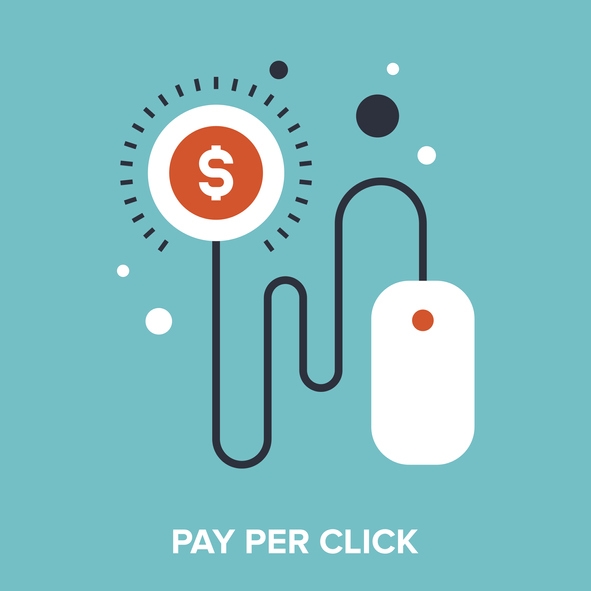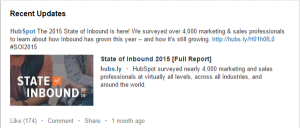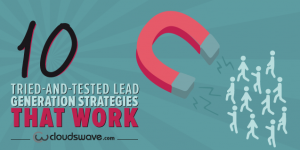— June 14, 2019

Pay-per-click (PPC) advertising for B2B can be a highly effective marketing tactic when done correctly. Adopting a PPC strategy has numerous benefits, but they can only be realized with the right strategic framework and careful execution. Getting started with PPC advertising doesn’t have to be an all-hands-on-deck project, but it does require planning and close monitoring to enable success.
Follow these fundamental PPC advertising considerations when getting your B2B organization started or to help audit your existing efforts.
Identify WHY you’re choosing PPC advertising
How do you envision PPC will support your overall marketing strategy? It’s important to articulate how PPC supports your marketing strategy before you ever begin the planning process. Thankfully, PPC can be leveraged to achieve a rather wide range of marketing and business objectives. For example, PPC advertising can bolster your lead generation efforts, raise brand awareness and boost revenue by supporting e-commerce. Let’s look deeper at applying PPC to support such objectives:
Lead generation – PPC is a good way to expose potential leads to information and content offerings that drive them through the sales funnel. Include compelling assets in your ads, and ensure that clicking on your ad brings leads to an engaging and relevant landing page with a streamlined web form.
Brand Awareness – If a goal for your PPC advertising is to increase brand awareness, consider creating display ads with visuals that will grab your audience’s attention and showcase your brand features. Using bright backgrounds and contrasting colors can help your ad stand out amidst busy webpages.
E-commerce Support – PPC advertising and successful e-commerce go hand-in-hand. According to Retail Dive, 87% of shoppers are starting their product searches on digital channels, while just 46% of shoppers still prefer to buy at an in-store location instead of online. Ultimately, PPC ads done right will increase visitors to your site and deliver desired engagement and purchases.
What buyer persona(s) are you targeting? Your company’s buyer personas will play a big role in how you set up your PPC advertising. Perform keyword research using Google’s free Keyword Planner tool to create a list of keywords your buyers might use when searching for products or services like yours. Identify high-priority keywords and phrases that you wish to display for when these keywords are searched. This list will also help guide you in the development of your ad copy and PPC landing pages.
A refined keyword list will also help you identify “negative keywords.” Negative keywords are used to keep your ads from showing to individuals that do not match your personas or that have a searcher “intent” that doesn’t align with what you’re trying to achieve. For example, if you want to weed out those that are investigating employment at your company because they’re not likely going to be a customer, consider adding “jobs” and “careers” as negative keywords.
Start slow and test along the way
There’s nothing wrong with easing your way in as you launch your PPC campaigns, especially as you begin testing your ads and gathering keyword intelligence. If you jump into PPC without careful planning, you can spend much more money than you intended and get little return on your efforts. You need to continuously optimize and engage with your campaigns to improve your ROI, including testing your ads and landing pages to identify which are performing best with your target audience.
Here are two important metrics to track and strive to make improvements on:
Quality Score
Keep an eye on your keywords’ Quality Scores as it plays a critical role in ad performance and spend. The higher the Quality Score, the better your ads will perform at a lower cost per click. Quality Score is comprised of an expected click through rate, ad relevance and landing page experience. Your quality score may seem like a throw-away metric at first, but it can have a big impact on your ad performance and cost per click.
Ad Rank
When you bid on a keyword in Google AdWords, you are competing against other companies and ads that have money placed on the same keyword. The Quality Score of your ad will be applied as a multiplier to determine your Ad Rank against other keyword competitors. The higher your Ad Rank, the greater exposure your products/services will get from having a higher clickthrough rate opportunity.
For example:

As you can see, even if one company bids much lower than anyone else, if they have a higher Quality Score they can still win the top position for that particular keyword.
Measure results with conversion tracking
Earlier, we mentioned “conversions,” which are counted when a visitor completes a call-to-action that you’ve established. A conversion could be a purchase on your site, filling out a form in exchange for a white paper or demo request, or something simpler like viewing a key page on your site or watching a video. Conversions are a key metric to aim for as they should be considered the GOAL behind your PPC efforts. Your ads can be receiving hundreds of clicks per month, but if they are not leading to conversions you may want to test changes to your landing page to foster more conversions.
A common mistake that organizations make is not properly understanding and defining what conversions mean generally and what they mean for their organization in particular. They may represent any or all of the goals we described above, but in all cases the proper tracking mechanisms must be in place to give you key insights into your ROI and general PPC performance. See this AdWords Help page for more conversion tracking assistance and insights.
The devil is in the details
Be careful with settling for “default” settings in your campaign as they may not be the best option for what you’re trying to achieve. Remember, you want to make your PPC campaigns worth the time and money by generating high quality leads and conversions. One campaign setting to pay close attention to are automated bidding strategies. They may sound enticingly easy at first but could skimp you on reach and bid dollars.
Another crucial consideration is ensuring that you choose the right keyword match types for the keywords and phrases that you want your ads to show for. Let’s look at each match type in more depth:
Broad Match: Broad match is the default match type in Google AdWords and gives you the opportunity to reach the largest audience. This match type will show your ads on any searches that include your keyword, including misspellings of your keyword, synonyms for your keyword and other relevant searches. For example:
Keywords: B2B marketing strategy
Applicable searches: B2V marketing strategy, B2B markting (& yes, misspellings too), how to create a B2B marketing strategy
Broad Match Modifier: Broad match modifier can be thought of as a better “catch-all” option. Here, each of your keywords will have a plus sign in front of them (+keyword). Then, searches that include your +keywords, in any order, will show your ads. For example:
Keywords: +B2B, +marketing, +strategy
Applicable searches: B2B marketing strategy, marketing strategy for B2B organizations, how to do strategy for B2B marketing
Phrase Match: Phrase match will display your ads on any searches that match or contain your key phrase. However, the phrase must appear as is, in the order you dictate, and cannot have any words in between the keyword phrase. If you target a very specific audience and want to serve ads when they’re searching with a very specific intent, phrase match is a great approach. For example:
Keywords: “B2B marketing”
Applicable searches: B2B marketing best practices, strategies in B2B marketing, B2B marketing trends
NOT Applicable searches: B2B content marketing, B2B lead generation and marketing, marketing B2B
Performance will also vary depending on device type, times of the day, demographics, days of the week and other settings. When choosing these settings, keep your buyer personas that you are targeting at the top of your mind. These are details you will want to continuously test and re-calibrate for optimal PPC performance.
While these are not the only PPC advertising strategies you’ll need to consider for your B2B organization, think of them as a solid starting point. PPC advertising for B2B is a highly effective marketing tactic but realizing sustainable success from it requires a great deal of upfront planning, ongoing analysis and careful execution.
Digital & Social Articles on Business 2 Community
(72)








